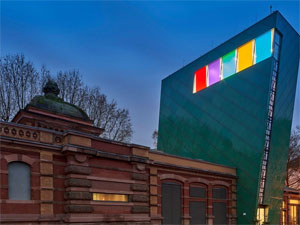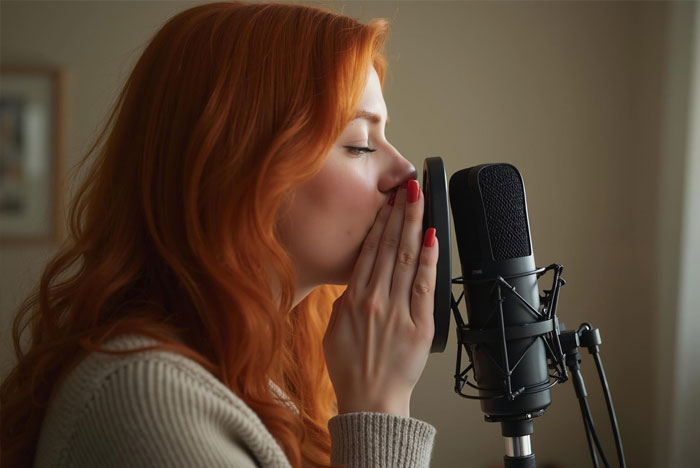From Twitch to Art Galleries: ASMR Has Long Since Gone Mainstream
You could see it coming. First, there were YouTubers whispering secretly into microphones. Then came Twitch streamers competing for likes with bunny ears and sensory microphones. And finally, OnlyFans creators who added a pinch of erotica to ASMR. What started as a nervous tingle in the neck of internet culture has now firmly arrived in the mainstream — and even in high culture.
💡 What is ASMR?
ASMR stands for Autonomous Sensory Meridian Response — a gentle tingling sensation, usually felt in the neck or head, triggered by subtle stimuli.
- Typical sounds: Whispering, tapping, rustling, soft repetitions
- Known from: YouTube, Twitch, TikTok, OnlyFans
- What does it do? Relaxation, sleep aid, performance, digital intimacy
- New: ASMR is increasingly being used in the art world, e.g., by Sunna Nousuniemi at the Kunsthalle Mainz
ASMR, this strange audiovisual calming tea, which works with finger tapping, whispering, and “trigger words,” has become an aesthetic tool for an entire generation searching for something that feels like closeness amidst dopamine kicks and sensory overload. Twitch, TikTok, and others have turned ASMR into a pop phenomenon. Millions listen to it, stream it, imitate it. The fact that a solid catalog of sounds and rituals has long since been established makes ASMR almost a new form of folklore — a little strange, a little hypnotic, and, above all, perfectly suited for the masses.
Tingles for the Arts Section — ASMR Reaches High Culture
 It almost seems inevitable that ASMR has now found its way into the art context. After all, what better medium is there to explore the fragile relationship between intimacy, performativity, and public space? The artist Sunna Nousuniemi uses exactly this mechanism in her work 100 Vuogi Dadjat Mii – Orrunsadji ASMR edition, featured in the exhibition What is the dream that makes you dream? at the Kunsthalle Mainz.
It almost seems inevitable that ASMR has now found its way into the art context. After all, what better medium is there to explore the fragile relationship between intimacy, performativity, and public space? The artist Sunna Nousuniemi uses exactly this mechanism in her work 100 Vuogi Dadjat Mii – Orrunsadji ASMR edition, featured in the exhibition What is the dream that makes you dream? at the Kunsthalle Mainz.
But this is not just a YouTube video projected onto a gallery wall. Nousuniemi fuses the ASMR format with the cultural memory of the Sámi, the indigenous people of Northern Europe. Here, whispering and crackling are not about self-care or sleeping problems, but about orally transmitted stories, nature, spirituality, and resistance. The installation feels like a quiet, almost fragile echo against forgetting, against colonial structures, and against the instant gratification of internet culture.
ASMR as a Commentary on Contemporary Culture
What’s also interesting is how ASMR, when used in art, becomes a commentary on its own pop-cultural origins. The same sounds that are mass-consumed on TikTok appear here slowed down, poetic, almost wistful. Nousuniemi shows: ASMR can do more than just calm. It can also evoke memories, resist, and tell stories.
And perhaps this is its true charm: ASMR has always been something ambiguous — somewhere between intimacy and show, between relaxation and self-staging. The fact that it has now arrived in the museum is not a cultural breach, but rather a logical step. Art has never been as far removed from pop culture as high culture likes to pretend.
📚 ASMR Glossary
ASMR – Autonomous Sensory Meridian Response: the famous tingling sensation triggered by gentle stimuli like whispering or tapping.
Trigger – Stimuli that elicit ASMR responses, e.g. tapping, whispering, crackling.
Tapping – Rhythmic tapping of fingers on surfaces; a classic ASMR sound.
Whispering – Whispering; a central element in nearly all ASMR performances.
Binaural Recording – Spatial two-channel audio recording that creates the illusion of sound coming directly from the left or right side.
Roleplay – ASMR videos in which creators take on roles (e.g. hairdresser, doctor, beautician).
Mukbang – A trend where large amounts of food are consumed audibly. Often combined with ASMR clips.
Ear Eating – Simulation of sounds as if the microphone were being “kissed” or “licked” — popular on Twitch and OnlyFans.
Tingles – The term for the typical ASMR tingling sensation triggered by these stimuli.










